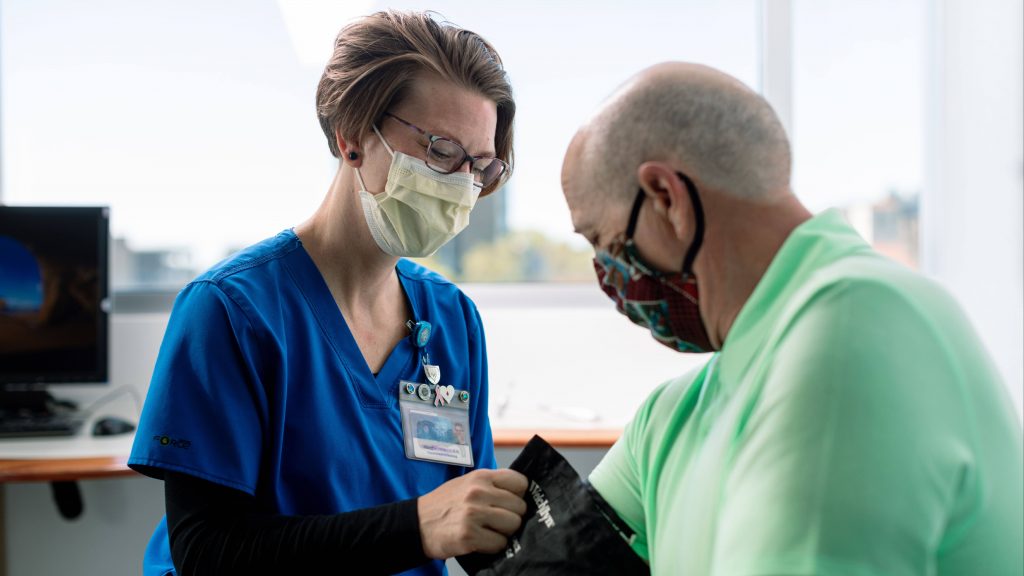
Mayo Clinic supports the protective value and effectiveness of widespread mask use, maintaining physical distancing at work and in public, and keeping hands clean as the primary infection prevention measures to stop the spread of COVID-19.
____________________________
Medical and scientific communities, including the World Health Organization (WHO) and the Centers for Disease Control and Prevention (CDC), widely agree that the primary route of transmission for COVID-19 is through droplets. This means transmission can occur when a person is in close contact with an infected person who coughs, sneezes, talks or sings, and the resulting droplets reach the mouth, nose or eyes of a susceptible person. Indirect transmission also can occur when touching contaminated objects or surfaces, and then touching one's eyes, nose or mouth.
Mayo Clinic uses multiple strategies to protect staff, patients and visitors, including universal masking, eye protection, distancing, screening and hand hygiene.
"We believe these measures have helped significantly reduce the risk for COVID-19 transmission," says Dr. Jack O'Horo, an infectious diseases specialist at Mayo Clinic. "We know that after implementing universal masking for our staff, we saw an immediate decrease in work-related exposures. Of the COVID-19-positive staff exposures that occurred at work, many were due to being unmasked during eating or celebrating with others during the workday. With that, it is clear that masking is an effective measure to prevent exposure to COVID-19 droplets."
Airborne transmission is most worrisome during aerosol-generating procedures performed in health care settings, so N95 respirators are required and other precautionary measures are taken during these activities to prevent transmission of airborne particles to others.
We know that after implementing universal masking for our staff, we saw an immediate decrease in work-related exposures.
Dr. Jack Horo
"Occupational health does carefully evaluate each COVID-positive employee," says Dr. Melanie Swift, associate medical director of Mayo Clinic Occupational Health Service. "Thus far, we have not seen any trend suggesting a significant role for airborne transmission during routine patient care or co-worker interactions."
Mayo Clinic continues to evaluate CDC and WHO guidance related to personal protective equipment as it is released and makes decisions based on science and Mayo's experiences with various infection control measures over the course of this pandemic.
"We will continue to evaluate new information and consider new strategies to keep patients and staff safe," says Dr. O'Horo.
Staff are reminded to adhere to state or local mandates for wearing masks. While on a Mayo Clinic campus, wear a mask at all times in all public and patient care areas. This includes wearing a mask outside if you are not alone.
"Widespread use of masks and face coverings helps control and prevent transmission of COVID-19," Dr. O'Horo emphasizes. "With several states seeing increases in COVID-19 cases, staff should continue to be vigilant and use all preventive measures."
This article is written by Mayo Clinic Staff. Find more health and medical information on mayoclinic.org.
Information in this post was accurate at the time of its posting. Due to the fluid nature of the COVID-19 pandemic, scientific understanding along with guidelines and recommendations may have changed since the original publication date.
Check the CDC website for additional updates on COVID-19. For more information and all your COVID-19 coverage, go to the Mayo Clinic News Network and mayoclinic.org.







